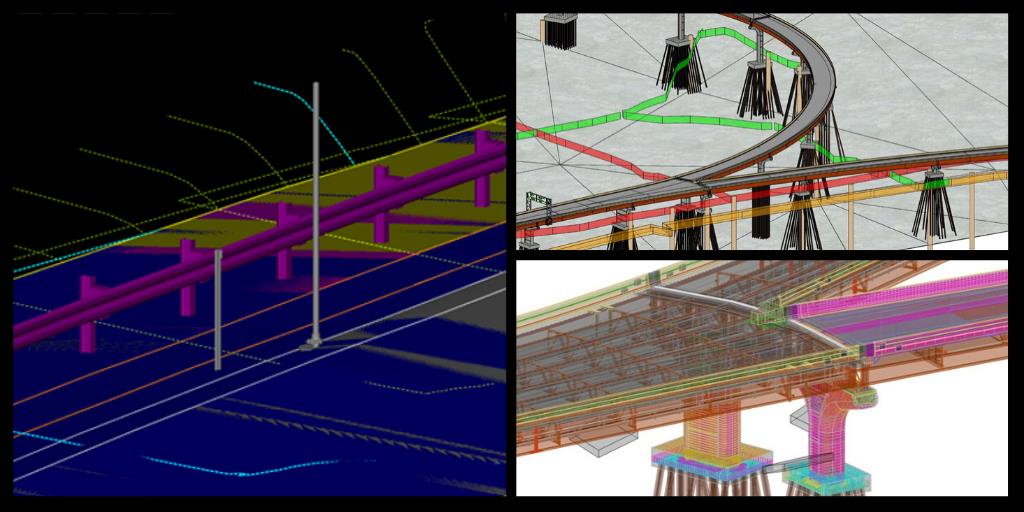
PennDOT is moving to embrace the world of three-dimensional (3-D) to streamline and enhance the project design and construction process in ways that are very fitting for a 21st Century organization.
The Computer-Aided Design and Draft (CADD) core working group led by Kelly M. Barber, P.E., Highway Administration program manager and section chief; William Harrison, CADD Manager; Leroy Posey, highway design manager; and Allen Melley, P.E., civil engineer manager, have been working on details.
Under the Digital Delivery program, which Melley leads, by 2025, construction projects will be able to be bid using 3-D technology rather than in traditional paper-based construction plan formats.
The initial focus is on an Open Roads Designer (ORD), which is an upgrade to the existing CADD platform, with training now in process for PennDOT staff and PennDOT pilots planned for this spring. Barber is focusing on this area.
With the existing process, designers work with two-dimensional (2-D) plans, which the building contractors then translate into three dimensions. With the Digital Delivery initiative, dubbed Planless 2025, the 3-D models will have details for all elements to be built and serve as the “document of truth,” from which the contractors will work. PennDOT expects this evolution will improve quality.
3-D plans already are being developed for the massive rebuilding of the Eisenhower Boulevard interchange at the junctions of Interstates 83 and 283 and U.S. 322 in Dauphin County.
“It’s a team effort, department-wide,” Melley said. “It’s a different way of doing business … We are moving to be a leader.”
PennDOT’s team is also reaching out to counterparts in Utah and Iowa who also are working on 3-D plans.
Eventually, all the 3-D plans would be used in PennDOT’s asset management and cover all of PennDOT’s road and bridge network. Inspectors would work with iPads and see all road or bridge details in 3-D, aiding in their work.
“It’s fascinating to be working on something that will change the department,” Melley said.
ABOUT THIS BLOG
Did you know PennDOT is directly responsible for nearly 40,000 miles of highway and roughly 25,000 bridges? We oversee programs and policies affecting highways, urban and rural public transportation, airports, railroads, ports and waterways, in addition to administering the state's more than 11 million vehicle registrations and 8.8 million driver's licenses.
So, how do we do what we do? And how can we help you travel in Pennsylvania — whether it be for business or leisure — in safe and enjoyable manner? Read PennDOT Way to learn more about the department, what we do, and how and why we do it.
TAGS
50-Year Anniversary, 511PA, Aggressive Driving, Airports, Autonomous Vehicles, Bicycles, Bridges, Child Safety, Community Relations, Construction, COVID-19, Distracted Driving, District 1, District 10, District 11, District 12, District 2, District 3, District 4, District 5, District 6, District 8, District 9, DOTcom, Driver and Vehicle Services, Emergency Responders, Employment, Equity, FAQ Friday, Human Trafficking, Impaired Driving, Innovations, Live Free Ride Alive, Maintenance Monday, Motorcycles, Older Drivers, PA Motorcycle Safety Program, Pedestrians, PennDOT Connects, Ports, Public Transit, Railroads, REAL ID, Road MaP, Roadside Beautification, Rural Roads, Safety, School Buses, Seat Belts, State Transportation Innovation Council (STIC), Sustainability, Teen Drivers, Throwback Thursday, Transportation Funding, Travel in PA, Welcome Centers, Winter, Work Smart, Work Zone, Yellow Dot
LATEST POSTS
PennDOT Continues Sharing, Updating Resources for Local Governments to Pursue Bipartisan Infrastructure Law Funding Opportunities
Norwin High School Wins 2024 ‘Innovations Challenge’
Demo Complete: I-95 CAP Project in Center City Philadelphia
PennDOT Archeologist Connects Past, Present, and Future
Lehigh Valley DUI, Highway Safety Task Force Hosts Law Enforcement Seminar
ARCHIVES
2024
2023
2022
2021
2020
2019
2018
2017

